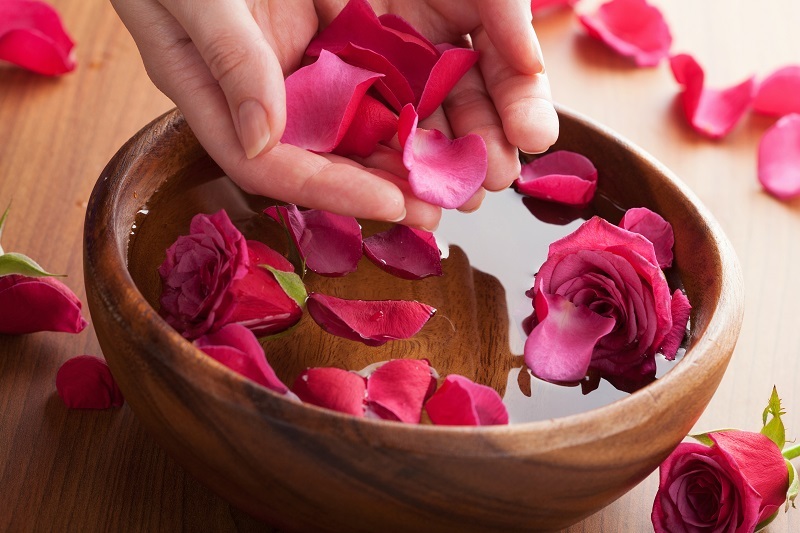Secrets to Maintaining Hydrangea Color and Health
Hydrangeas are beloved for their vibrant blooms and lush foliage, adding a captivating appeal to gardens, patios, and landscapes. However, keeping these enchanting plants both healthy and rich in color requires more knowledge than simply watering and occasional pruning. This in-depth guide unveils the secrets to maintaining hydrangea color and health, ensuring your hydrangeas remain a focal point of beauty throughout every season.

Understanding Hydrangea Varieties and Their Colors
Before you can successfully maintain or change the color and health of your hydrangeas, you should understand that not all hydrangea types behave the same way. Each hydrangea variety offers distinct flower hues, growth habits, and care requirements.
Main Types of Hydrangeas
- Bigleaf Hydrangeas (Hydrangea macrophylla): Famous for their color-changing blooms, displaying blue, pink, or purple depending on soil pH.
- Panicled Hydrangeas (Hydrangea paniculata): Show off white flowers that transition to pink or red, but are not affected by soil pH.
- Smooth Hydrangeas (Hydrangea arborescens): Typically deliver white or green blossoms, color remains constant.
- Oakleaf Hydrangeas (Hydrangea quercifolia): Known for white blooms and distinctive foliage, not influenced by soil acidity.
- Mountain Hydrangeas (Hydrangea serrata): Similar to bigleaf types, with color variability depending on soil conditions.
Key takeaway: If you're aiming to adjust bloom color, focus your efforts on bigleaf or mountain hydrangeas.
The Science Behind Hydrangea Bloom Color
Perhaps the most fascinating aspect of hydrangea color maintenance is that you can manipulate flower hues by adjusting the soil's chemistry. Yet, this only applies to certain varieties, particularly hydrangea macrophylla and hydrangea serrata. Here's how it works:
- Blue Hydrangeas: Achieved in acidic soil (pH below 6), enabling the plant to absorb aluminum which turns petals blue.
- Pink Hydrangeas: Result from alkaline soil (pH above 7), where aluminum is less available, yielding pink blooms.
- Purple/Lavender Shades: Occur with soil pH levels falling between 6 and 7, often resulting in a blend of pink and blue tones.
Note: Soil pH is the master key in controlling hydrangea flower color. However, white hydrangeas will not change color based on soil pH.
Secrets to Maintaining Vibrant Hydrangea Colors
Now, let us unravel the most reliable methods for preserving or changing hydrangea color and achieving vibrant, healthy blooms season after season.
1. Testing and Adjusting Soil pH
Soil testing is the cornerstone of hydrangea color preservation. Periodically test your soil to determine its pH level:
- Purchase a soil test kit from a garden center or cooperative extension.
- Take samples from the root zone (about 6 inches deep) where the hydrangeas grow.
- Follow the test instructions to determine your soil's current pH.
Based on the results:
- For blue blooms: Lower pH by adding garden sulfur, aluminum sulfate, or pine bark mulch.
- For pink blooms: Raise soil pH by incorporating garden lime (dolomitic lime), wood ash, or bone meal.
- Be patient--it may take a growing season for meaningful color change.
2. Consistency in Watering and Drainage
Healthy hydrangeas rely on consistent moisture but hate soggy, poorly drained roots. Achieve optimal results by:
- Watering deeply once or twice weekly, ensuring soil is evenly moist.
- Mulching with organic material to retain moisture.
- Improving drainage in clay soils by adding compost or organic matter.
- Never letting roots sit in water-logged ground.
3. Proper Feeding for Bloom and Color Enhancement
The right nutrients are essential for sustaining healthy hydrangeas and intense color:
- Choose a fertilizer low in phosphorus (the "P" in N-P-K), as high phosphorus binds aluminum, making it unavailable to hydrangeas in acidic soil (which is needed for blue blooms).
- Feed sparingly in spring and early summer--overfertilizing encourages leaf growth over blooms.
- For blue blooms, use fertilizers with higher potassium and lower phosphorus (like 25-5-30 formulations).
4. Location and Light Exposure
The right planting location keeps hydrangeas blooming brightly and wards off stress:
- Most hydrangeas prefer morning sun with afternoon shade; too much direct sun may scorch leaves and pale flowers.
- Underneath tall, open-branched trees or on the east or north side of a building are ideal locations.
- Shelter from strong winds to prevent breakage and dehydration.
Caring for Hydrangea Health: Secrets to Disease and Pest Control
Even the most spectacular blooms will fade if plant health is neglected. Here's your blueprint for robust, resilient hydrangeas:
1. Pruning: When and How
Proper hydrangea pruning not only maintains shape but can also rejuvenate old, tired plants--a core secret to hydrangea vitality!
- Bigleaf and mountain hydrangeas bloom on "old wood"--prune just after flowering but avoid heavy pruning late in the season.
- Panicled and smooth hydrangeas bloom on "new wood"--best pruned in late winter or very early spring.
- Thin out dead or crowded stems annually to boost air circulation and minimize disease.
2. Disease Prevention
Common hydrangea diseases include powdery mildew, leaf spot, and root rot. Secret weapons for defense:
- Water at the base to avoid wet foliage and reduce fungal spores.
- Space plants adequately for good airflow.
- Mulch to prevent soil splash-back.
- Promptly remove diseased leaves.
- Fungicide only as a last resort and according to label instructions.
3. Pest Control
Hydrangeas are relatively pest-resistant, but you may encounter:
- Aphids: Knock off with water spray or use insecticidal soap.
- Spider mites: Control with consistent moisture and horticultural oil.
- Slugs/Snails: Remove by hand or use barrier traps.
- Japanese Beetles: Daily hand-picking works well.
4. Year-Round Maintenance Secrets
Stellar health and long-lasting hydrangea color come from proper year-round attention:
- Winter Protection: In cold climates, mulch heavily over the root zone and wrap plants if needed.
- Seasonal Clean-Up: Remove spent blooms and dead stalks before spring growth.
- Regular Feeding: Apply balanced, slow-release fertilizers in early spring and optionally midsummer.
Common Hydrangea Problems and Solutions
1. Green Blooms
If your colorful hydrangea unexpectedly blooms green, don't panic. This often occurs as flowers age late in the season or if the plant lacks nutrients. Simply prune faded blooms and ensure consistent feeding.
2. No Blooms
Common causes for lack of flowers include:
- Frost damage to buds in spring.
- Improper pruning, cutting away flowering wood.
- Too much shade or over-fertilization.
Solution: Protect in spring, prune at the right time, and optimize sun exposure.
3. Wilting or Yellowing Leaves
This usually indicates either underwatering or poor drainage. Adjust your watering schedule and check for compacted soil or excess mulch suffocating the roots.
Natural and Organic Tricks for Maintaining Hydrangea Color and Health
Gardeners who prefer organic methods can still enjoy colorful, healthy hydrangeas using these techniques:
- Coffee grounds: Add sparingly to acidify soil for blue blooms (not too much, as it can acidify soil rapidly).
- Crushed eggshells: Scatter around the base to raise soil pH, encouraging pink blooms.
- Pine straw mulch: Acidifies over time, perfect for blue hydrangeas.
- Leaf mold or compost: Enriches soil and promotes root health without synthetic fertilizers.
Companion Planting and Landscape Tips for Healthier Hydrangeas
To sustain a thriving ecosystem and protect hydrangea color and vigor year after year, practice thoughtful companion planting:
- Under-plant with ferns, hostas, or astilbe to shade roots and retain soil moisture.
- Mix in spring bulbs for early color and improved drainage.
- Avoid planting too close to large trees that may compete for nutrients and water.
- Use organic mulch for weed suppression and moisture retention without harsh chemicals.

Frequently Asked Questions: Hydrangea Color and Health
Q: How long does it take to change hydrangea flower colors?
A: Once you begin amending soil pH, expect visible bloom color changes to take one to two growing seasons. Consistency and patience are key!
Q: Can I change white hydrangea blooms to pink or blue?
A: No, white-flowered hydrangeas remain white regardless of soil pH. Only bigleaf and mountain types allow for color manipulation.
Q: Is aluminum sulfate safe?
A: When used according to directions, aluminum sulfate is safe. However, excessive amounts may harm plants, so follow application guidelines carefully.
Q: What type of mulch is best for hydrangeas?
A: Organic mulches, such as pine bark, pine needles, or compost, are ideal. They enrich soil, retain moisture, and can help acidify for blue flowers.
Conclusion: Create a Lasting Garden Showcase with Hydrangeas
Unlocking the secrets to maintaining hydrangea color and health lies not in complicated gardening hacks, but in understanding the basic science behind soil, bloom development, and consistent care. With the right balance of sunlight, moisture, soil pH adjustments, proper feeding, and disease prevention, your hydrangeas will reward you with mesmerizing blooms and vibrant foliage for years to come.
Whether you're striving for cerulean blue, romantic pink, or ethereal purple, these insider secrets turn you into the envy of any gardener in your neighborhood. Commit to ongoing care, organic tweaks, and smart planting companions for a vibrant, healthy hydrangea haven!
Ready to get started? Test your soil today, and let your hydrangeas color your world--naturally!
